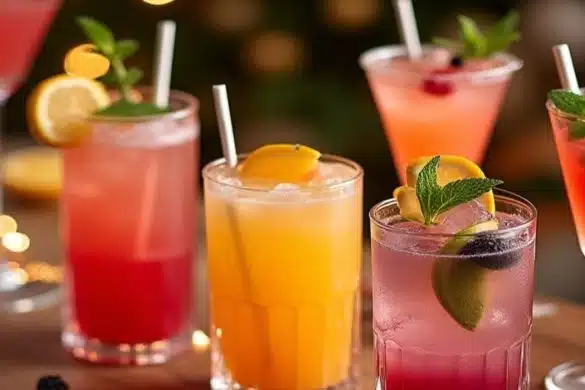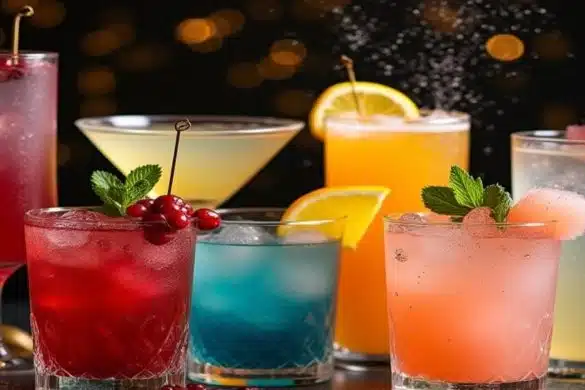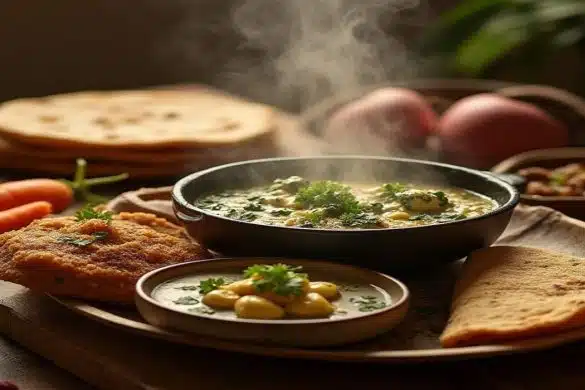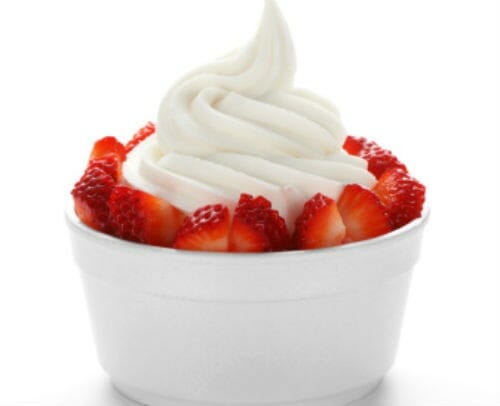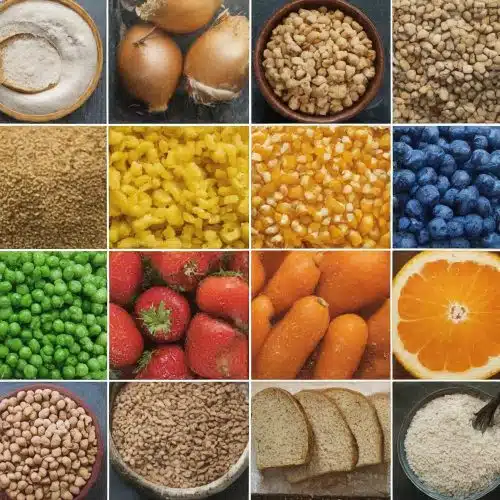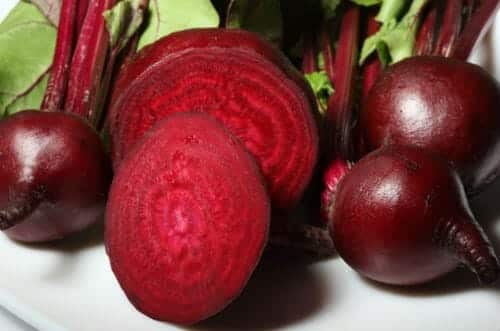Key Highlights
- Pairing drinks with food enhances flavours, texture, and the overall dining experience.
- A flavor guide to pairing foods in alcoholic drinks helps create balanced combinations.
- Pairing non alcoholic drinks with food offers refreshing options for all diners.
- Matching flavour intensity, complementary vs. contrasting tastes, and aroma improves pairings.
- Different beverages, wines, beers, mocktails, and more, suit specific dishes and cuisines.
- Creative ideas include bold flavours, cultural pairings, and low-ABV options.
Pairing food and drinks can be a daunting task, whether you are hosting a dinner party, planning a restaurant menu, or simply enjoying a meal at home. Many people struggle to understand the fundamentals of pairing and which beverages complement certain dishes, often resulting in mismatched flavours that overwhelm the palate or leave meals feeling incomplete.
Understanding the principles of food and drink pairing is the key to solving this problem. By learning how to match flavours, intensities, and complementary textures, you can enhance both the food and the beverage, creating harmony on the plate and in the glass.
This blog aims to guide you through the essentials of food and drink pairings. You will discover practical tips, basic principles of flavour, common mistakes to avoid, and creative ideas, helping you confidently select beverages that complement any dish and impress any audience.
What Exactly Are Food and Drink Pairings and Why Do They Matter?
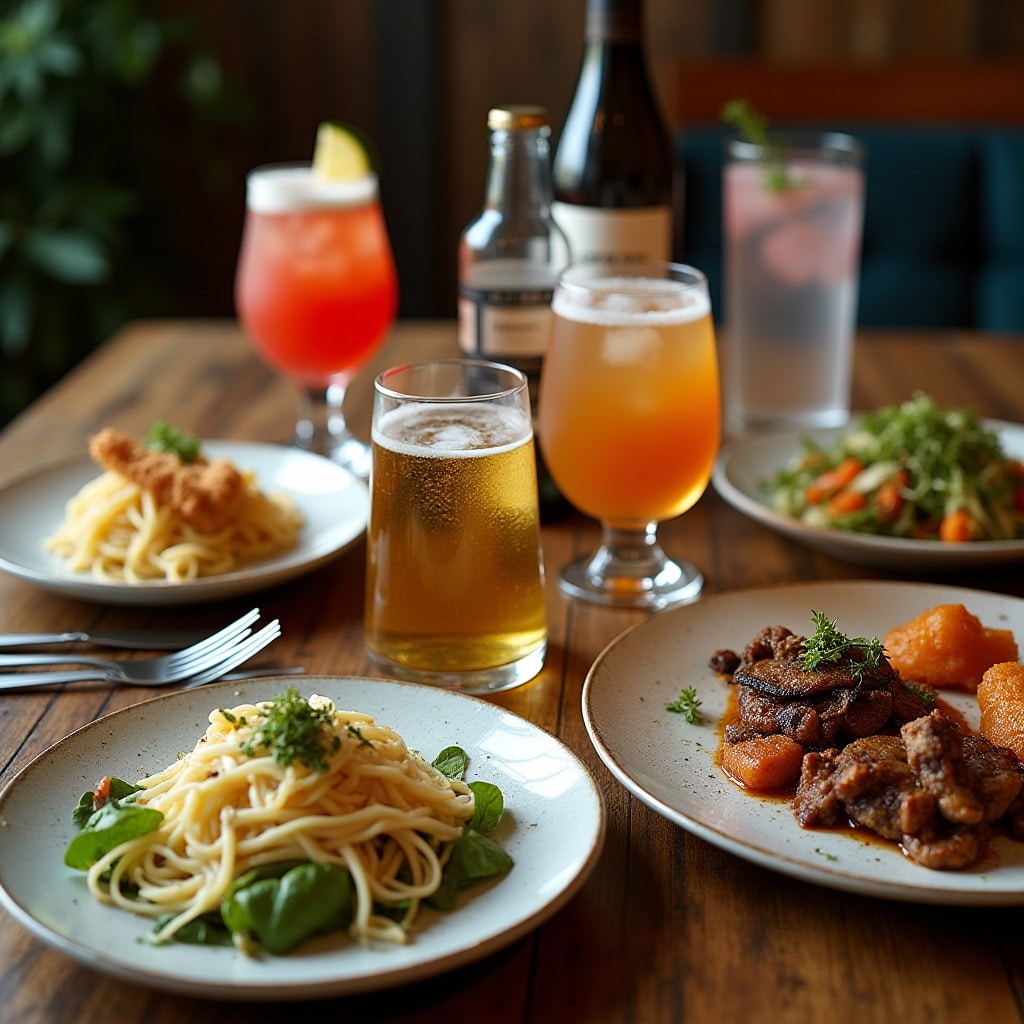
An elegantly arranged dining scene featuring a mix of food and drink pairings
Food and drink pairings are about matching meals with beverages in a way that brings out the best in both. The best food and drink pairings enhance flavours, balance textures, and make every meal more enjoyable. Whether it’s wine with dinner, tea with snacks, or fresh juices with a light meal, the right combination creates a wholesome and memorable dining experience.
Here’s why food and drink pairings matter:
- Enhances Flavour: The right drink brings out subtle tastes in the food.
- Balances Richness and Texture: Light drinks cut through heavy dishes, while creamy meals pair well with smooth beverages.
- Elevates Meals: Thoughtful pairings make everyday meals feel special.
- Improves Satisfaction: Restaurants and home cooks can impress guests with smart combinations.
What Are the Key Principles of Flavour Theory in Pairing Foods and Drinks?
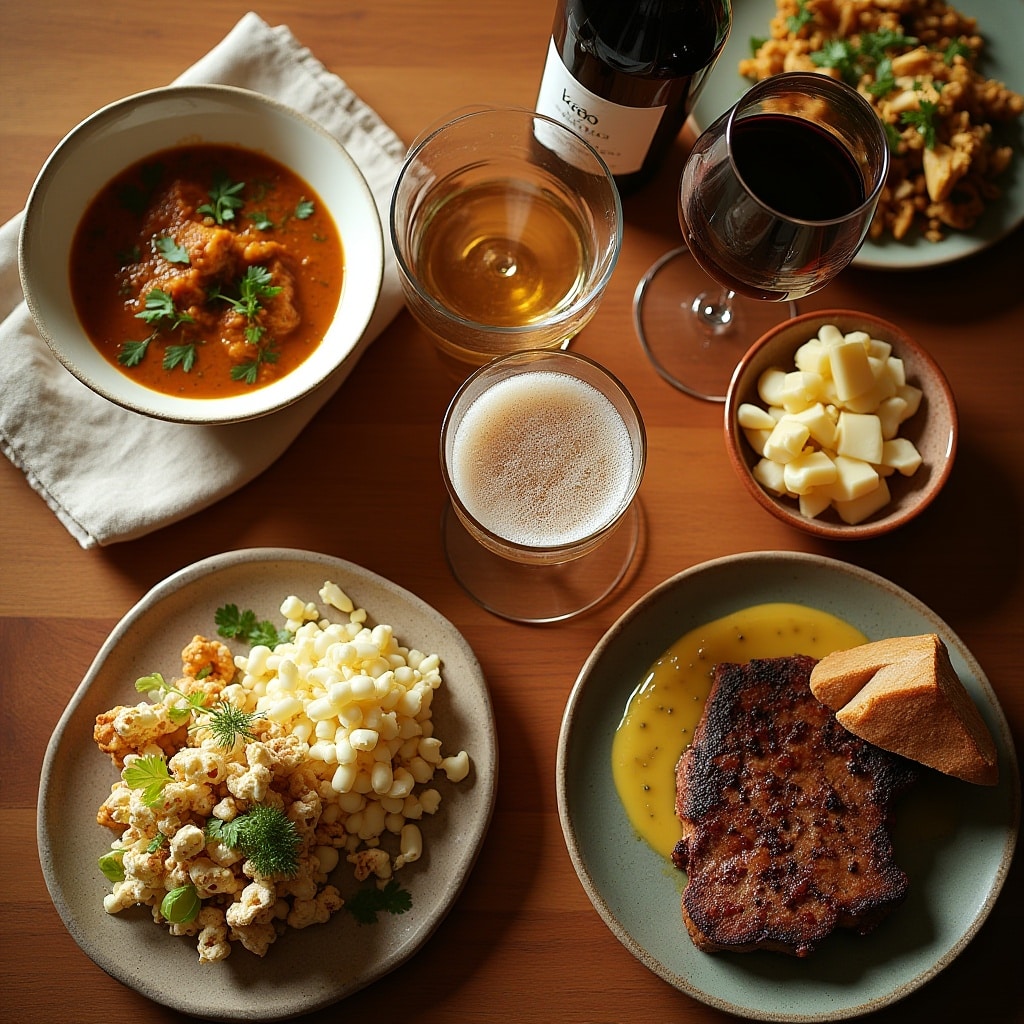
A visually appealing top down view of a dining table showing thoughtfully paired foods and drinks
Understanding flavour theory helps create effective food and drink pairings by balancing taste, intensity, texture, and aroma. Using a flavor guide to pair foods in alcoholic drinks shows how sweetness, acidity, bitterness, saltiness, and umami align, setting the stage for the principles that follow:
1. Matching Flavour Intensity and Weight
The intensity and body of both food and drink must match. A light dish with a heavy drink can overwhelm the palate, while a bold dish with a weak beverage may feel flat. Think of it as balancing power: subtle foods pair with lighter drinks with lower alcohol content, and rich foods pair with full-bodied wines or robust beers. Some examples include:
- Light salads with a crisp lager or light white wine
- Grilled fish with a Sauvignon Blanc or session ale
- Butter chicken with a full-bodied Chardonnay or malty amber ale
- Lamb biryani with a robust red wine or strong ale
- Paneer tikka with a medium-bodied beer or aromatic white wine
2. Complementary Pairings
Complementary pairings bring together foods and drinks with matching flavour profiles, creating a balanced and harmonious taste experience. When ingredients share similar notes, they naturally enhance each other. Examples include:
- Buttery popcorn with a creamy wheat beer
- Rich paneer makhani with a smooth, lightly oaked Chardonnay
- Chocolate desserts with a malty stout
- Smoked cheese with a smoky whisky
- Herb-roasted chicken with an herbaceous Sauvignon Blanc
3. Contrasting Pairings
Contrasting pairings use opposing flavours to create a dynamic, attention-grabbing taste experience. By pairing ingredients with distinctly different profiles, you enhance each element and add depth to the dish. Examples include:
- Sweet dessert wine with salty blue cheese
- Crisp apple cider with spicy chilli chicken
- Dry sparkling wine with fried pakoras
- Tangy goat cheese with a sweet Riesling
- Dark rum with spicy ginger-laden dishes
4. Considering Texture, Aroma, and Mouthfeel
Pairing goes beyond taste. It involves the full sensory experience. A crisp wine can refresh the palate, creamy textures can soften acidity, and aromatic elements in a drink can mirror flavours in a dish. Focusing on mouthfeel, aroma, and texture ensures a satisfying combination. Here are some examples:
- Crisp Sauvignon Blanc with fried fish to refresh the palate
- Creamy pasta with an acidic white wine for balance
- Herb-infused cocktails with herb-forward dishes
- Sparkling wine with rich or oily starters like pakoras
- Chocolate mousse with a smooth stout
How Should You Pair These 11 Different Types of Beverages with Food?
Pairing the right beverage with food elevates both flavours and the overall dining experience. By understanding characteristics like body, bitterness, acidity, and aroma, you can match drinks with dishes to create balanced, harmonious, and memorable flavour combinations:
1. Red Wine

Red Wine
Red wines, with their full-bodied flavours and tannins, pair best with rich, hearty dishes such as red meat, beef, lamb, and roasted meats. Their robust structure enhances savoury flavours, while the wine’s acidity balances fatty cuts.
Classic pairings include Cabernet Sauvignon with steak or Merlot with roasted lamb, and they also complement flavourful dishes like Greek-style lamb meatballs.
2. White Wine
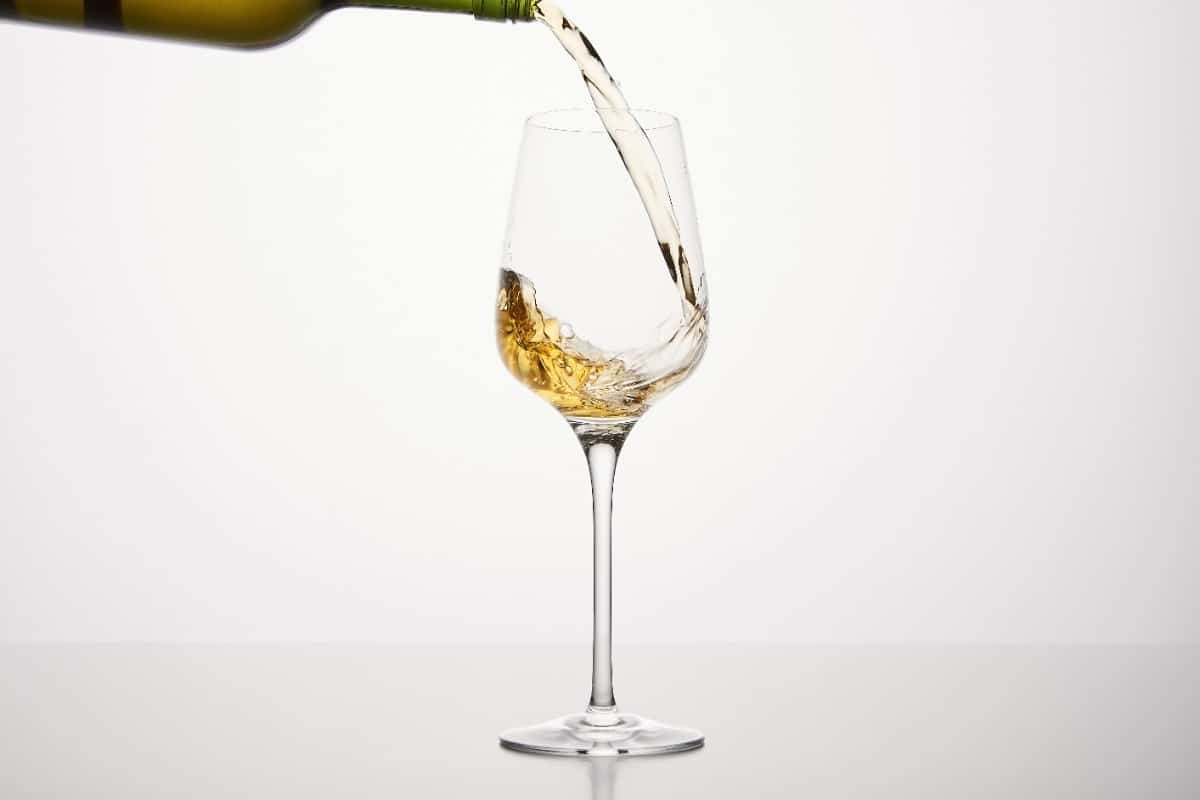
White Wine
White wines, such as Pinot Grigio, are lighter and more delicate, making them ideal for chicken, seafood, and vegetarian dishes. Their bright acidity and crispness complement lighter proteins, salads, and creamy sauces. White wine enhances subtle flavours without overpowering them and pairs wonderfully with refreshing dishes like seafood and fennel salad with dill dressing.
For more specific pairings, Chardonnay works well with buttery fish, while Sauvignon Blanc pairs beautifully with fresh, herb-forward dishes.
3. Sparkling Wine

Sparkling Wine
Sparkling wines are versatile and refreshing, with effervescence that cuts through fat and balances saltiness. They pair well with fried foods, creamy appetisers, and delicate desserts.
Champagne or Prosecco adds celebratory flair and freshness, while the bubbles cleanse the palate, making each bite of rich or indulgent food feel lighter and more enjoyable, especially with dishes like crispy fried chicken.
4. Lager
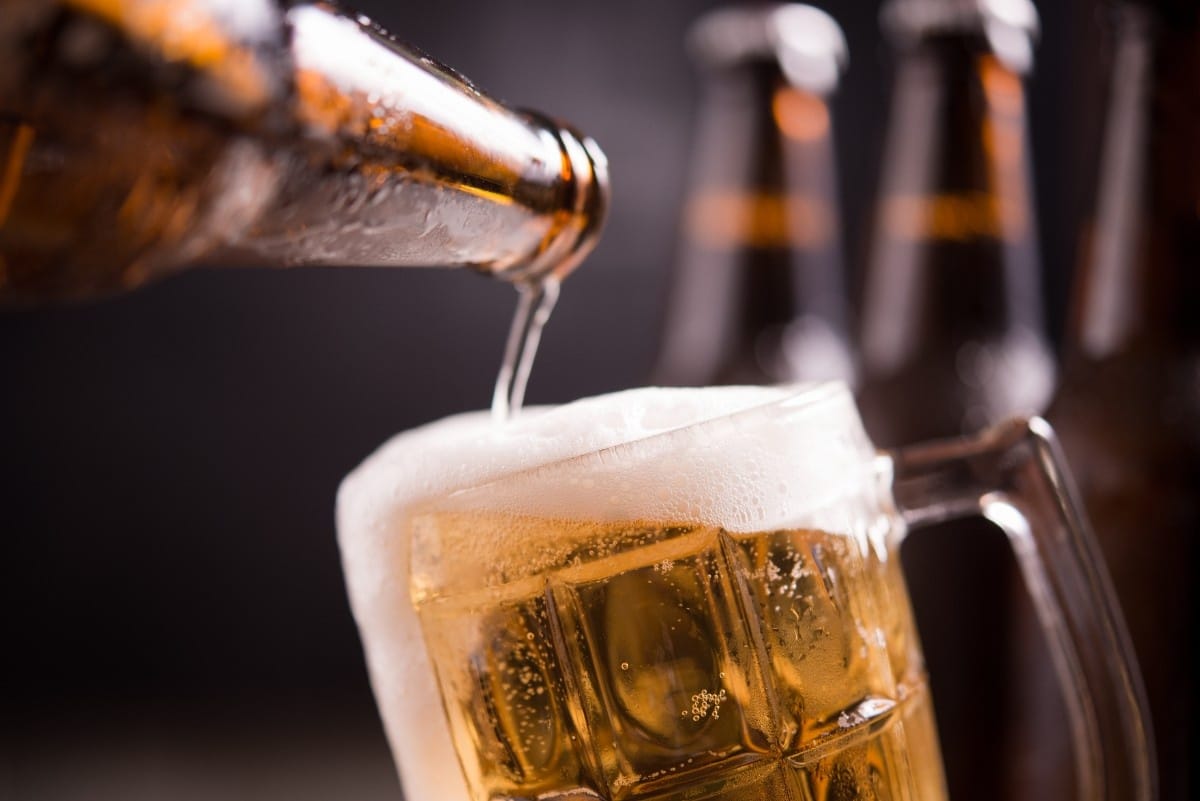
Lager
Lagers are light, crisp, and easy-drinking, making them ideal with grilled chicken, salads, and mild dishes. Their subtle malt sweetness and low bitterness complement food without overwhelming it.
They pair exceptionally well with dishes like spicy honey grilled chicken. Additionally, wheat beers refresh the palate, balance lighter flavours, and create a clean pairing experience suitable for casual meals or lighter fare.
5. Hoppy IPA (India Pale Ale) and Brown Ales
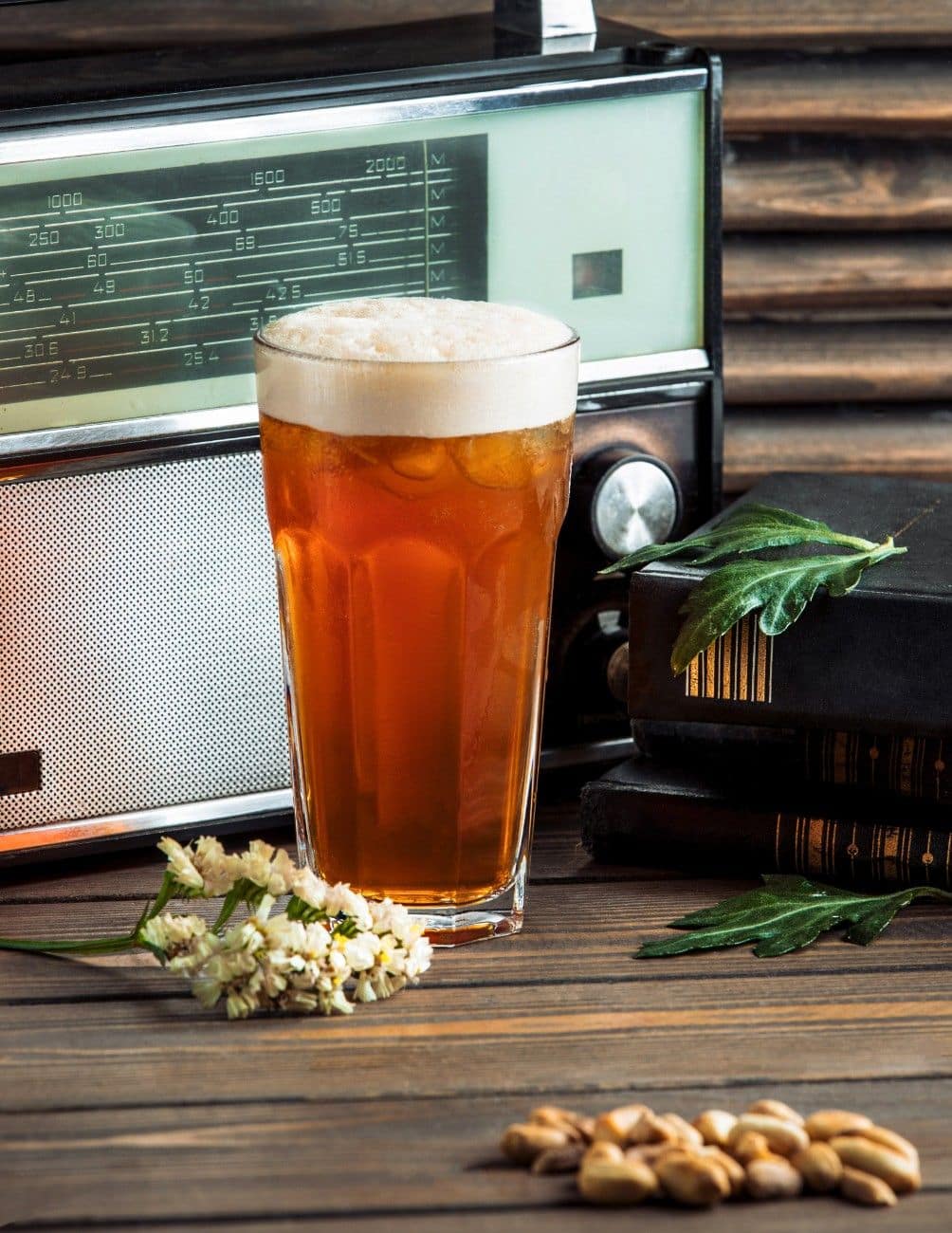
IPA India Pale Ale
Hoppy IPAs and brown ales have bold bitterness and citrusy notes that pair well with spicy foods, such as curries, tacos, and hot wings. They also complement dishes like crispy chicken wings.
The beer’s strong hop profile balances heat while refreshing the palate between bites. IPAs enhance complex spices and make fiery dishes more approachable, creating a lively and balanced dining experience.
6. Stout

stout
Dark stouts, with their roasted, chocolatey flavours, complement desserts, smoked meats, and rich sauces. The beer’s deep malt profile enhances chocolate, caramel, and coffee notes, creating a dessert-friendly experience, especially with treats like chocolate and Baileys cheesecake.
Stouts balance smoky, fatty dishes, providing richness while cleansing the palate, making them ideal for indulgent or bold flavours.
7. Whiskey and Bourbon

Whiskey
Whiskeys and bourbons pair best with smoked, grilled, or roasted meats. Their warmth, sweetness, and oak flavours enhance savoury dishes, creating a balanced flavour experience.
They pair especially well with bold dishes like grilled chilli chicken. Bourbon’s caramel notes complement BBQ sauces, while whiskey highlights the depth of smoked meats. These pairings suit hearty, rich meals that need bold, structured drinks.
8. Gin Cocktails
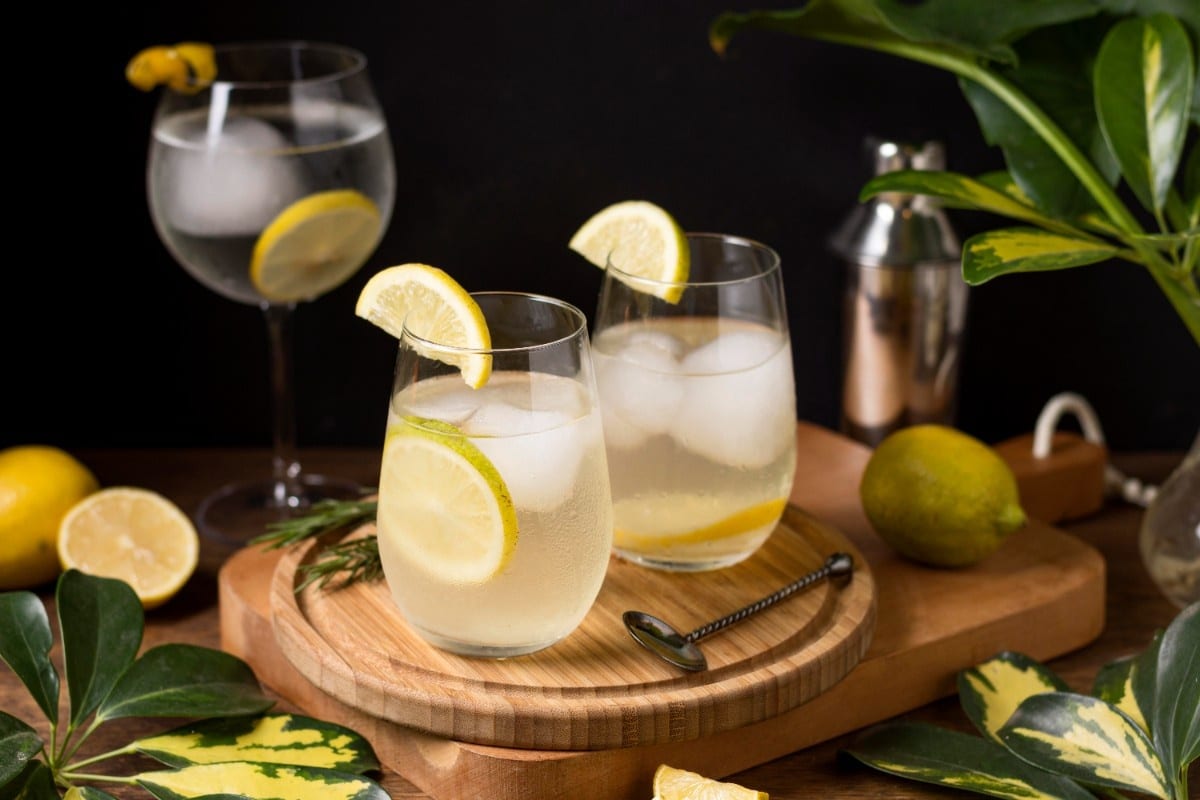
Gin Cocktails
Gin cocktails, with their herbal, citrusy, and botanical notes, pair beautifully with herb-forward dishes, salads, and lighter proteins. They complement aromatic flavours without overpowering them, especially when served alongside fresh dishes like a Mexican Tomato and Lettuce Salad.
Gin-based drinks work well with Mediterranean, Indian, or Asian cuisine, enhancing subtle herbs while adding complexity and a refreshing balance.
9. Mocktails
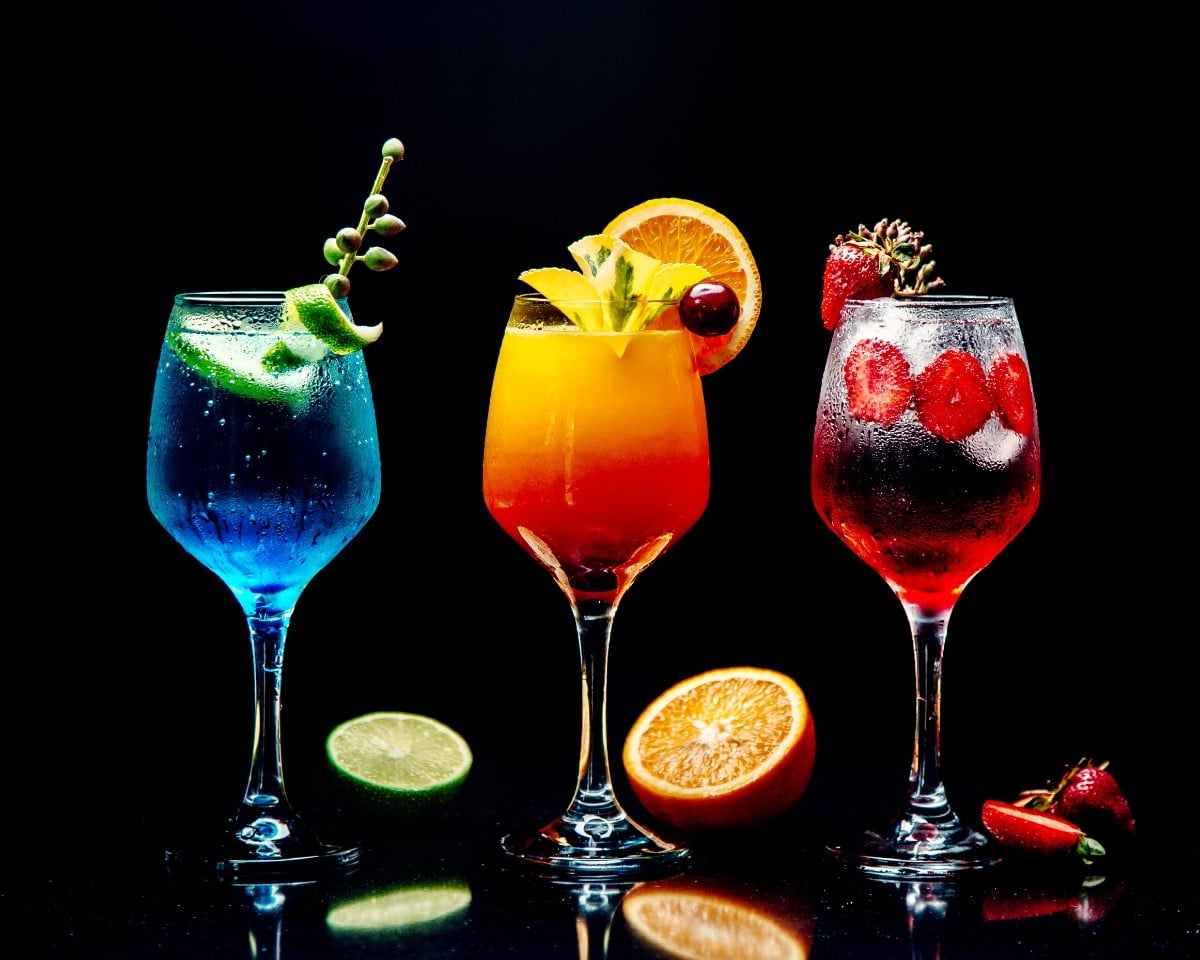
Mocktails
Non-alcoholic cocktails mimic the complexity of alcoholic drinks, using herbs, spices, fruits, and bitters. They pair with both light and rich dishes, echoing the flavours of a meal.
For instance, a citrus-mint cooler complements grilled fish, a spiced ginger–lime spritzer balances rich curries, and a rosemary berry cooler pairs beautifully with roasted vegetables or creamy pasta.
Mocktails enhance dining without alcohol, offering refreshing, balanced options that elevate the experience while accommodating non-drinkers.
10. Rum

Rum
Rum’s naturally warm, caramel-like notes make it a versatile partner for many dishes. Light rum complements tropical flavours such as pineapple, coconut, and mildly spiced seafood, while dark rum pairs well with grilled meats, chocolate desserts, and dishes featuring deeper spices like cinnamon or clove.
Spiced rum, with its added aromatics, works especially well with barbecued foods and rich Indian curries, creating balanced and flavourful pairings.
11. Juices and Iced Teas
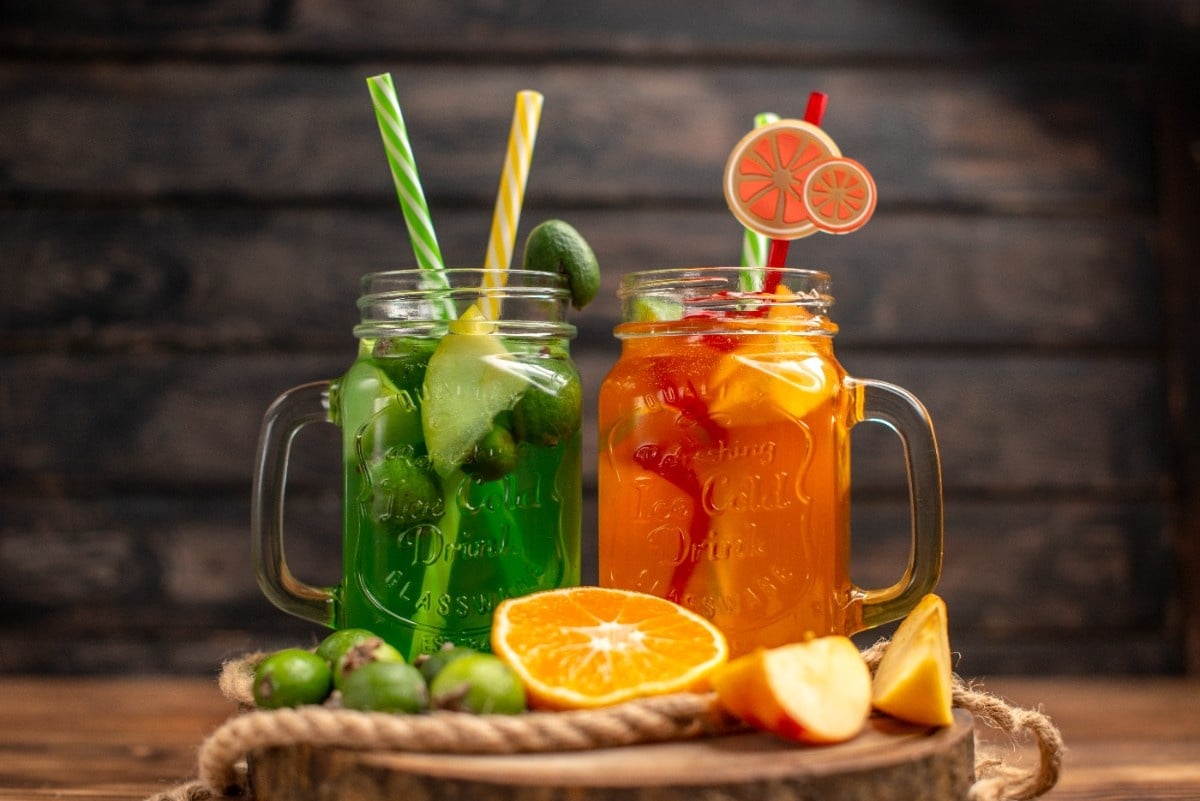
Juices
Fresh juices and iced teas offer versatile non-alcoholic pairing options. Citrus juices brighten savoury dishes, while berry or apple juices complement desserts.
Iced teas, such as Mango Mint Iced Tea, refresh the palate and balance rich or fatty foods, providing inclusive, flavourful options for all diners.
Which 5 Foods Work Best with Specific Drink Pairings?
Different foods call for specific drink pairings to enhance flavours and create harmony. Understanding which beverages complement meats, seafood, spicy dishes, cheeses, or desserts ensures a balanced, enjoyable, and memorable dining experience for every meal and occasion:
1. Meat

Drinks with Meat
Chicken and turkey pair well with light wines, crisp beers, or refreshing non-alcoholic drinks.
Beef and lamb, such as Grilled Lamb Skewers, benefit from full-bodied wines, robust ales, or whiskey-based cocktails that complement richness.
Pork is versatile, matching fruity wines, light lagers, or lightly spiced cocktails, ensuring every bite and sip harmonises.
2. Seafood
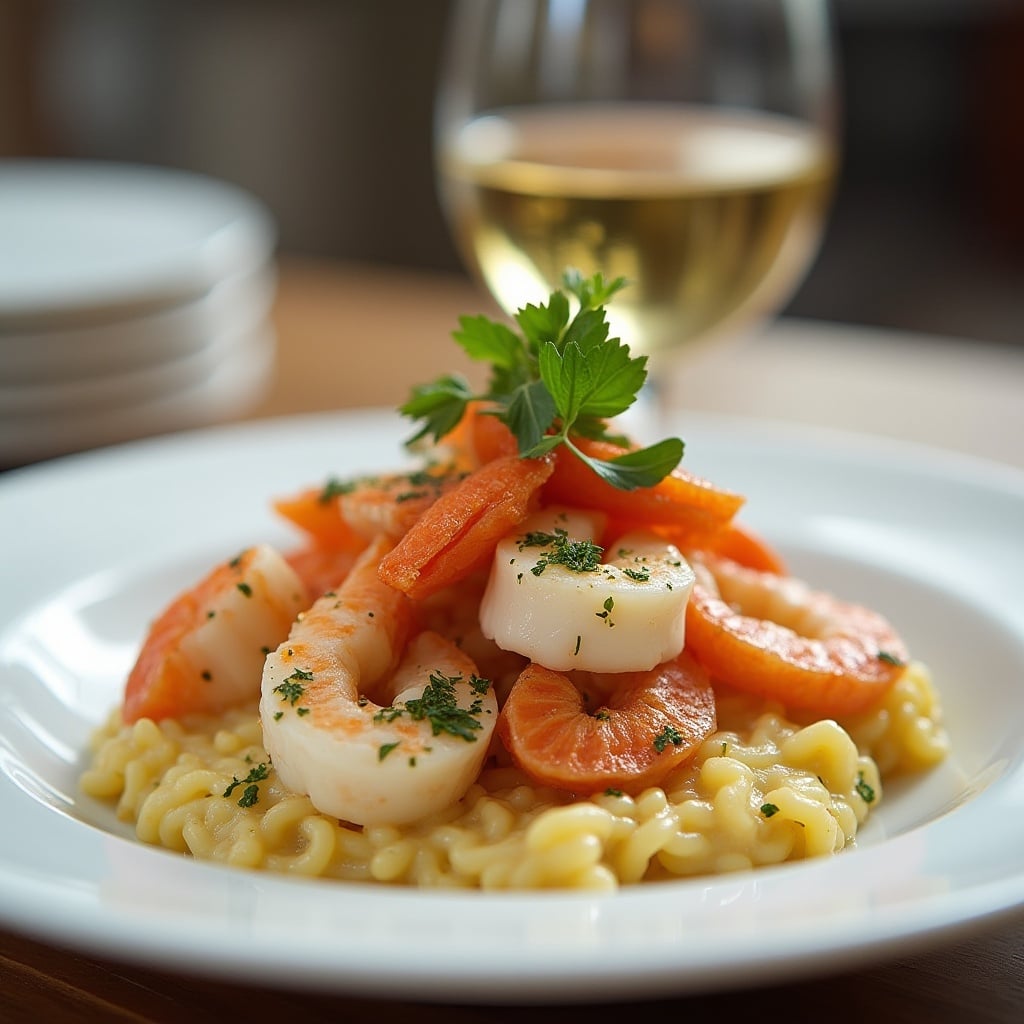
Seafood Drink Pairings
Seafood’s delicate flavours, such as in a creamy seafood risotto, pair best with light, acidic beverages like ginger ale. White wines, sparkling wines, and crisp beers enhance that freshness without overpowering subtle tastes.
Citrus-based mocktails or lightly flavoured herbal teas also complement seafood, balancing texture, aroma, and acidity for a refreshing experience.
3. Spicy and Ethnic Cuisine

Spicy and Ethnic Cuisine Pairings
Spicy or heavily seasoned dishes, such as spicy fish curry, pair well with slightly sweet or citrusy drinks that temper heat. Alcoholic drink pairings with Indian food, like off-dry Rieslings or light beers, can balance spice while enhancing complex aromas.
Off-dry wines, light beers, and refreshing non-alcoholic options create harmony. Matching flavour intensity, balancing heat with sweetness or acidity, and emphasising nuanced aromas ensures the palate isn’t overwhelmed.
4. Cheese, Appetisers, and Small Plates
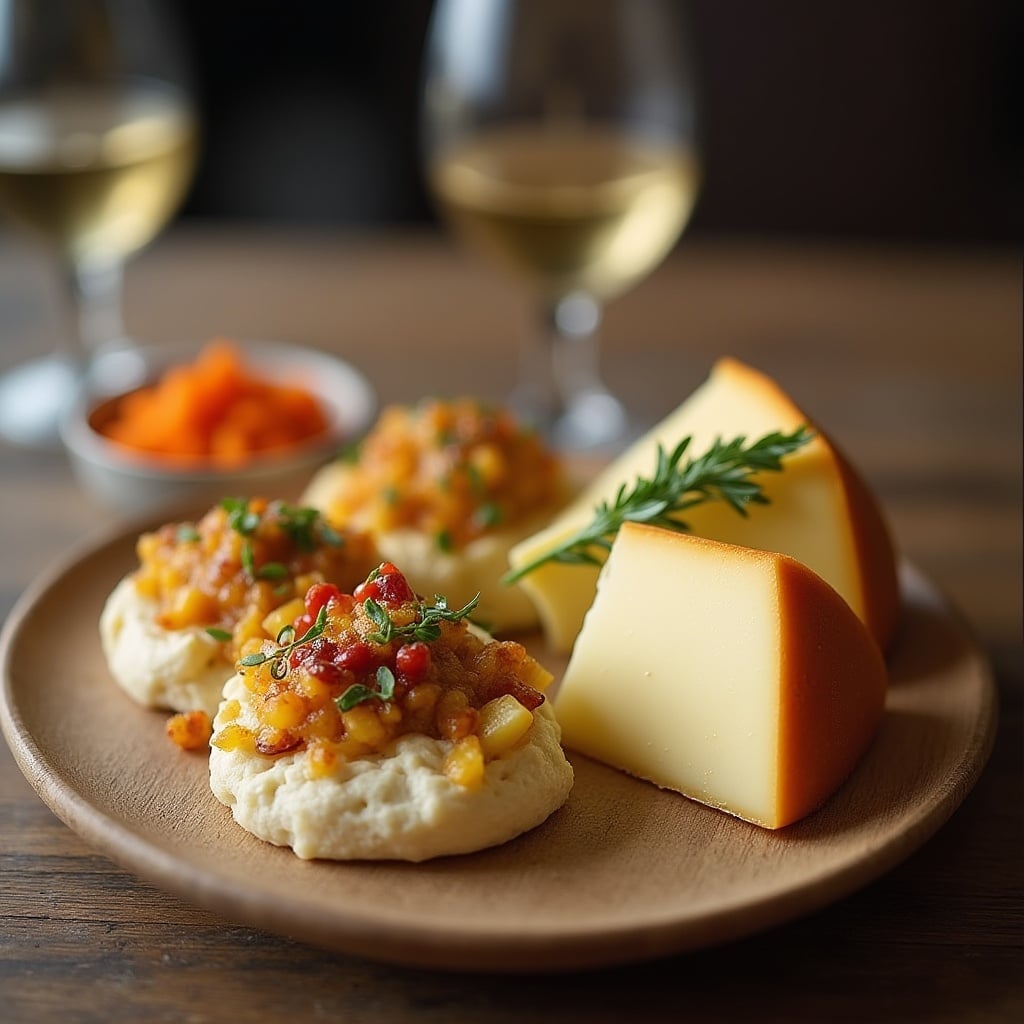
Cheese Appetizers and Small Plates
Cheese pairings depend on texture and richness. Creamy cheeses pair with sparkling wines or light beers, while aged or hard cheeses match full-bodied reds.
Appetisers like mushroom quesadillas offer opportunities for creative pairings, including seasonal mocktails or herbaceous cocktails. Thoughtful combinations highlight subtle flavours, textures, and aromas, creating an elevated tasting experience.
5. Desserts and Sweet Treats

Desserts and Sweet Treats
Desserts require beverages that balance sweetness and richness. Dessert wines, sweet cocktails, or sparkling non-alcoholic drinks complement chocolate, pastries, or fruit‑based desserts.
Pairing chocolate with stout beers or berry‑forward red wines creates depth, especially with chocolate hazelnut truffles. Lighter options like sparkling juice refresh the palate.
Which Seasonal Pairing Ideas Can Elevate Your Menu?
Alt text: The image visually representing seasonal food and drink pairings.
Seasonal ingredients offer natural inspiration for pairing food and drinks, helping you create combinations that feel refreshing in warm months and comforting during different times of the year:
- Spring brings fresh produce and delicate flavours. Light salads, grilled fish steak, and herb-forward dishes pair beautifully with crisp white wines, floral rosé, or citrus-mint mocktails that highlight the season’s brightness.
- Summer is all about juicy fruits and vibrant spices. Watermelon salads, tandoori grills like tandoori tofu kebabs, and spicy street snacks complement chilled beers, sparkling wine, fruity cocktails, or cooling drinks like cucumber-lime coolers.
- Autumn introduces earthy vegetables and warm spices. Dishes featuring roasted vegetables, such as roasted veggie penne, along with mildly spiced curries and glazed meats, work beautifully with medium-bodied red wines, spiced cocktails, or apple-based drinks that echo the season’s warmth.
- Winter leans towards rich, hearty dishes. Slow-cooked meats, creamy curries like creamy prawn curry, and warm desserts pair well with bold red wines, dark rum cocktails, spiced ales, or aromatic hot beverages that bring comfort during colder months.
What Are the 5 Common Mistakes You Should Avoid When Pairing Food and Drinks?
Good food-and-drink pairings can transform a meal, but a few common mistakes often bring the experience down. Being aware of these slip-ups helps you create combinations that feel balanced, enjoyable, and truly complementary.
1. Ignoring Flavour Intensity and Balance
Mismatch in flavour strength can throw off the entire pairing. Heavy or rich dishes paired with very light drinks, or delicate dishes matched with overly strong beverages, can feel unbalanced. Ensuring the food and drink carry similar weight is essential for a smooth, harmonious experience.
2. Overcomplicating Pairings
Too many strong or competing flavours can confuse the palate. Simple and thoughtful pairings usually work far better than complicated ones. Whether you’re matching similar flavours or creating contrast, keep the combination clean and purposeful.
3. Disregarding Seasonality
Seasonal ingredients naturally guide what feels right on the plate and in the glass. Ignoring this can lead to combinations that feel out of place, like pairing a heavy spiced drink with a light summer salad. Keeping the season in mind ensures freshness, comfort, and better harmony.
4. Neglecting Dietary Preferences and Restrictions
Not considering vegetarian, vegan, or alcohol-free needs can leave guests without suitable options. Offering thoughtful alternatives ensures everyone at the table enjoys a balanced pairing without compromising on taste or inclusivity.
5. Overlooking Cost and Practicality
Relying solely on rare or expensive beverages is not always practical. Effective pairings should be flavourful, accessible, and affordable. Choosing sensible options helps you create enjoyable combinations for everyday meals as well as special occasions.
Conclusion
Thoughtful food and drink pairings can turn an ordinary meal into an exceptional experience. Whether you are matching classic Indian dishes with the right alcoholic beverages, creating refreshing non-alcoholic options, or exploring innovative flavour combinations, the core principles remain the same: balance, intention, and an understanding of how flavours interact.
By experimenting with new ideas, learning from guest preferences, and refining your pairings over time, you can curate menus that feel cohesive, enjoyable, and memorable. When every sip complements every bite, dining becomes more than nourishment; it becomes an experience worth savouring.
Frequently Asked Questions
What are some popular non-alcoholic drink pairings for different types of food?
Sparkling water with citrus complements rich dishes, herbal teas pair with desserts, and fruit-based mocktails enhance light meals. Non-alcoholic options refresh the palate, balance flavours, and allow everyone to enjoy harmonious dining experiences.
Do you have tips for pairing cocktails with appetisers or main courses?
Match intensity and flavour profiles: light cocktails suit delicate appetisers, while bold, spirit-forward drinks pair with rich mains such as steak. Complement or contrast flavours, and consider acidity, sweetness, or spice for balance.
What are some food and drink pairing ideas for celebrations or special occasions?
Celebrate with sparkling wines, Champagne, or themed cocktails paired with craft beers, canapés, finger foods, or decadent desserts. Matching festive beverages to flavourful dishes elevates the experience and creates memorable moments.
Are there any pairing techniques to enhance the flavours when hosting a dinner party?
Balance intensity, texture, and aroma. Contrast or complement flavours, serve tasting flights, and include non-alcoholic options. Seasonal ingredients, creative cocktails, and thoughtful wine selections enhance the meal and overall dining experience.
What are easy food and drink pairing combinations I can try at home?
Try white wine with chicken, red wine with beef, sparkling wine with fried foods, IPA with spicy dishes, or herbal tea with desserts. Simple pairings highlight flavours without overwhelming the palate.
How do I choose the best drink to complement a specific dish?
Choose a drink by matching flavour intensity, balancing richness, and considering texture and aroma. Light dishes suit crisp beverages, while richer foods need fuller drinks. Complementary or contrasting flavours ensure harmony and enhance the overall dining experience.
How can I pair whisky or beer with different cuisines?
Pair whisky or beer by aligning flavour strength with the cuisine’s profile. Smoky whisky suits grilled meats, lighter whisky matches mild dishes, hoppy beers pair with spicy foods, and malty beers complement hearty, savoury meals across global cuisines.
What are the absolute best food and drink combo?
Some of the best combinations balance flavour, texture, and aroma. Classic pairings include grilled meats with full-bodied wines, spicy foods with crisp beers, cheese with sweet wine, and desserts with aromatic cocktails, creating satisfying, well-rounded dining experiences.

